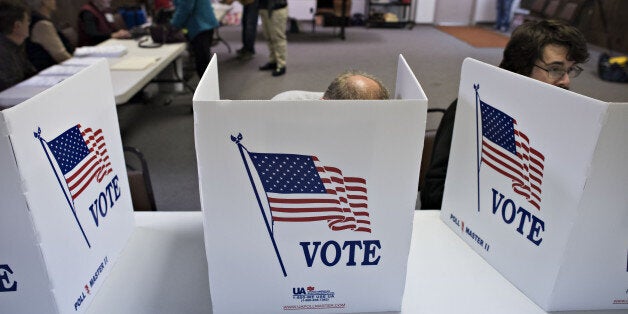
Back in May, The New Republic reported that 78 million Americans are so-called "Reflex Voters." They vote every two years come hell or high water.
Unfortunately from our points of view, on November 4, 49 percent of these Reflex Voters favored the tea party and 52 percent of them say they voted Republican in the Congressional elections.
So, game, set and match for the Democrats in 2016 and thereafter?
Not necessarily, since another 49 million Americans are so-called "Unreliable Voters" who only vote in presidential elections -- and only about 38 percent of Unreliable Voters like the Tea Party, and when they do show up to vote, only 37 percent of them are likely to vote Republican in congressional elections.
So while the Republicans clearly had an advantage in the 2014 midterm elections -- "add-in," as they say -- Democrats might still have won a few more sets, or actual seats, if only the current batch of Unreliable Voters hadn't in fact been so darn "unreliable" and instead had come out and voted their self-interests all the way through the ballot.
According to "The Science of Democratic Survival" by journalist Sasha Issenberg, in order to turn out in 2014 the fickle segments of the electorate to the Democrats' messages, the Dems needed to generate either a massive amount of direct mail or an equally massive amount of face-to-face canvassing. Specifically, in order to win just the twelve Senate races profiled in Issenberg's New Republic article, the Democrat candidates would have needed to either spend $127.8 million on direct mail or generate 6.7 million volunteer hours of face-to-face voter contacts.
Faced with these massively expensive and massively labor-intensive -- and thus impossible-to-achieve -- campaign requirements, of the 12 Senate-race states profiled in Issenberg's article the Democrat lost in Alaska, Arkansas, Colorado, Georgia, Iowa, Kentucky, Montana, North Carolina and West Virginia (that's nine), while Louisiana is headed for a tough run-off. The Democrat won in Michigan and New Hampshire.
The Science of Democratic Survival was not at all flawed, rather it was just married to campaign tools dulled by overuse. Issenberg noted that it would take 10 direct mail pieces or six face-to-face contacts to get just one Unreliable Voter out to vote.
By way of contrast, social media platforms like Facebook more closely match the new, cutting edges of retail politics than does direct mail or foot canvassing. For a fraction of the cost and time commitment, social media can easily out-perform the 90 million pieces of direct mail or 40 million voter contacts envisioned in Issenberg's article.
Take UCubed, for instance, the social media-based "Union of the Unemployed." It has over 260,000 Facebook fans, and many of their 75 million "friends of fans" are those Unreliable Voters which the Dems failed to sufficiently reach.
Between Labor Day and Election Day, over 34,000 of UCubed's Facebook fans, on average, were directly 'hitting' every day the virtual streets of America. And through 'likes' and 'shared content' that number swelled to nearly 520,000 potential voters each day, or about 34.3 million individuals over the eight-week period.
UCubed's most liked and shared meme said simply, "Don't Vote, Don't Bitch." By the end of October, 97% of UCubed's fans -- we called them "Leaders" -- were saying they'd be voting on November 4.
The simple UCubed page, built and run on a shoestring budget but with the enthusiastic engagement of thousands of unemployed workers, had more likes than all but two Democrat candidates for the Senate -- and those two campaigns, Senator Al Franken's (D-MN) and Senator Corey Booker's (D-NJ), weren't among the twelve targeted in the Issenberg article. UCubed's level of engagement -- in Facebook lingo, "People Talking About This (TAT)" -- averaged over 247,000 per week.
The Democrat candidates in the 12 Senate races which Sasha Issenberg analyzed spent millions on paid canvassers, direct mail and television ads, with not great results. UCubed and others adopted the new, breakthrough "Science of Democratic Survival" to much greater relative effect.
Social media that taps into the passions and the needs of the electorate can turn an Unreliable Voter into a Reflex Voter. There's a lesson here.